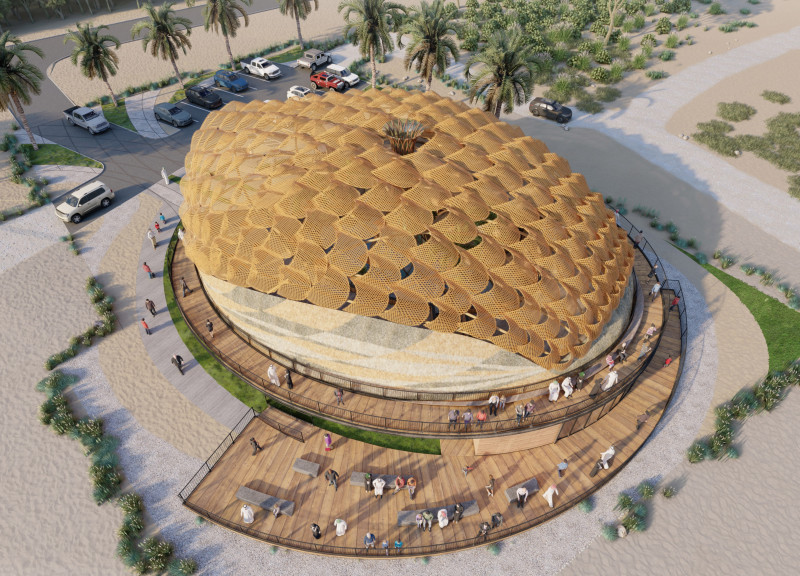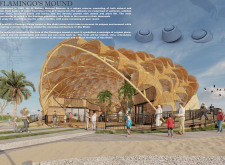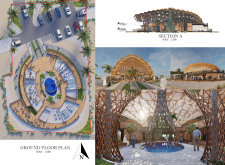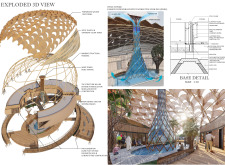5 key facts about this project
The Flamingo Visitor Center is located in the Al Wathba Wetland Reserve in Abu Dhabi, a region known for its rich ecosystem that covers 5 square kilometers. This center serves as a place for education and recreation, aimed at raising awareness about local wildlife, particularly the flamingos that inhabit the area. The design draws inspiration from the shape of a flamingo's mound or nest, creating a strong connection to nature while evoking feelings of comfort and familiarity.
Architectural Form
The building features a flowing, organic shape that integrates with the surrounding landscape. By using a form that is rotated, sliced, and articulated, the structure appears to rise from the ground, enhancing its relationship with the natural environment. This design approach supports various functions and creates a diverse experience for visitors.
Materials and Craftsmanship
Material choice is important to the design, focusing on sustainability and local context. The project suggests using date palm materials to make modern wicker panels for both the outside and inside of the center. This choice connects the architecture to local culture, using traditional techniques while adapting them for modern applications.
Environmental Integration
A wind tower is incorporated into the design to provide natural ventilation. This element helps keep the interior comfortable without relying on mechanical cooling. It serves both as a practical feature and as a representation of Abu Dhabi's architectural history, linking the past with the present.
Sustainable Practices
The construction process emphasizes sustainability through modular building techniques, which aim to lower costs and speed up the construction timeline. Using pin foundations helps reduce excavation and limits the use of concrete, reflecting a commitment to environmentally friendly practices. These methods aim to lessen the project’s impact on the environment while ensuring structural stability.
A distinct design detail is the pattern created by the wicker panels. This feature allows light to filter through, casting interesting shadows in the interior spaces, enhancing the overall experience for visitors while maintaining a connection to the natural world.





















































